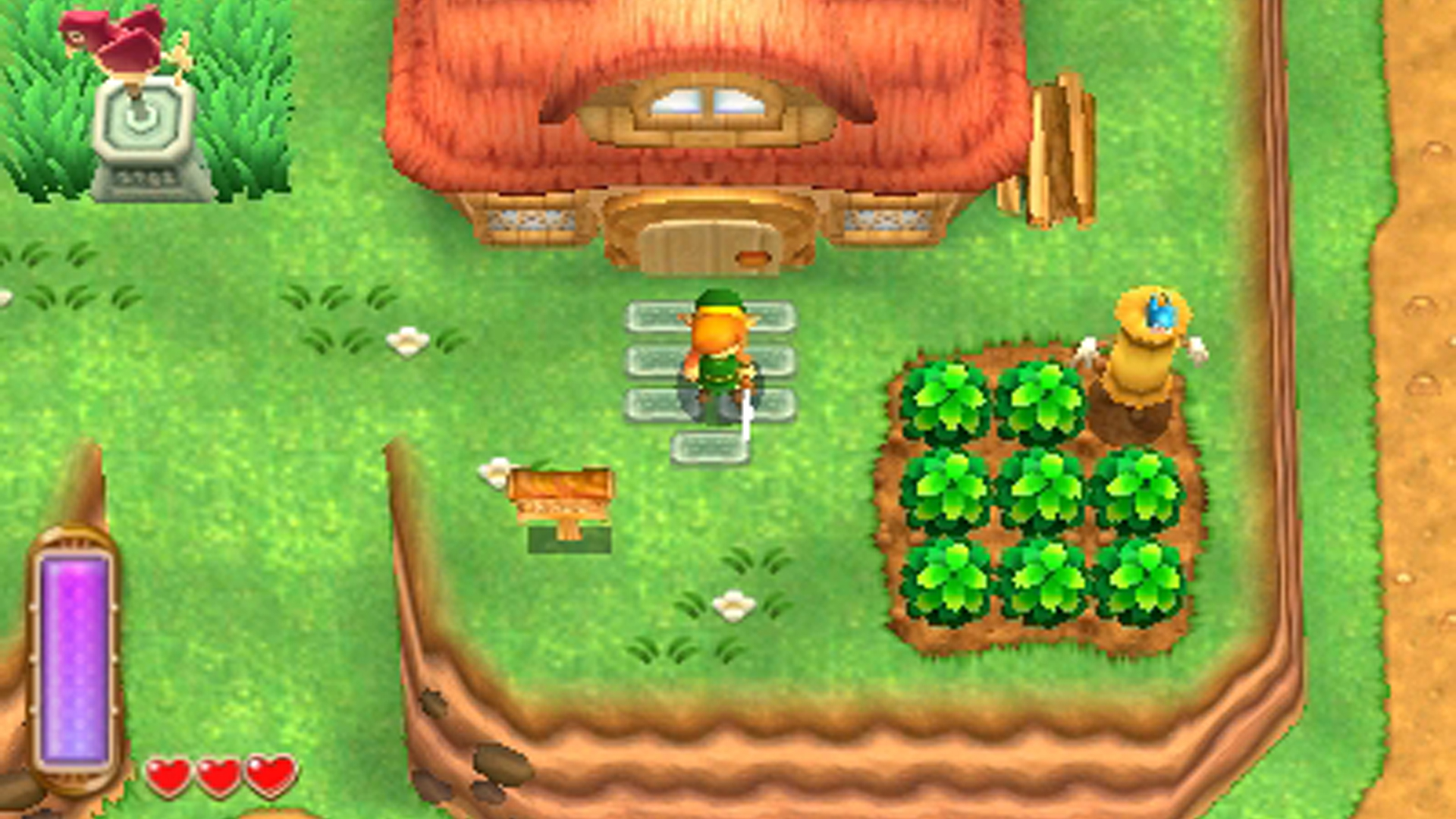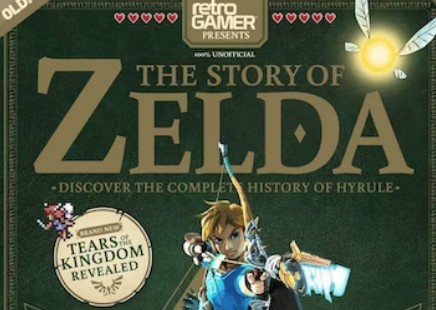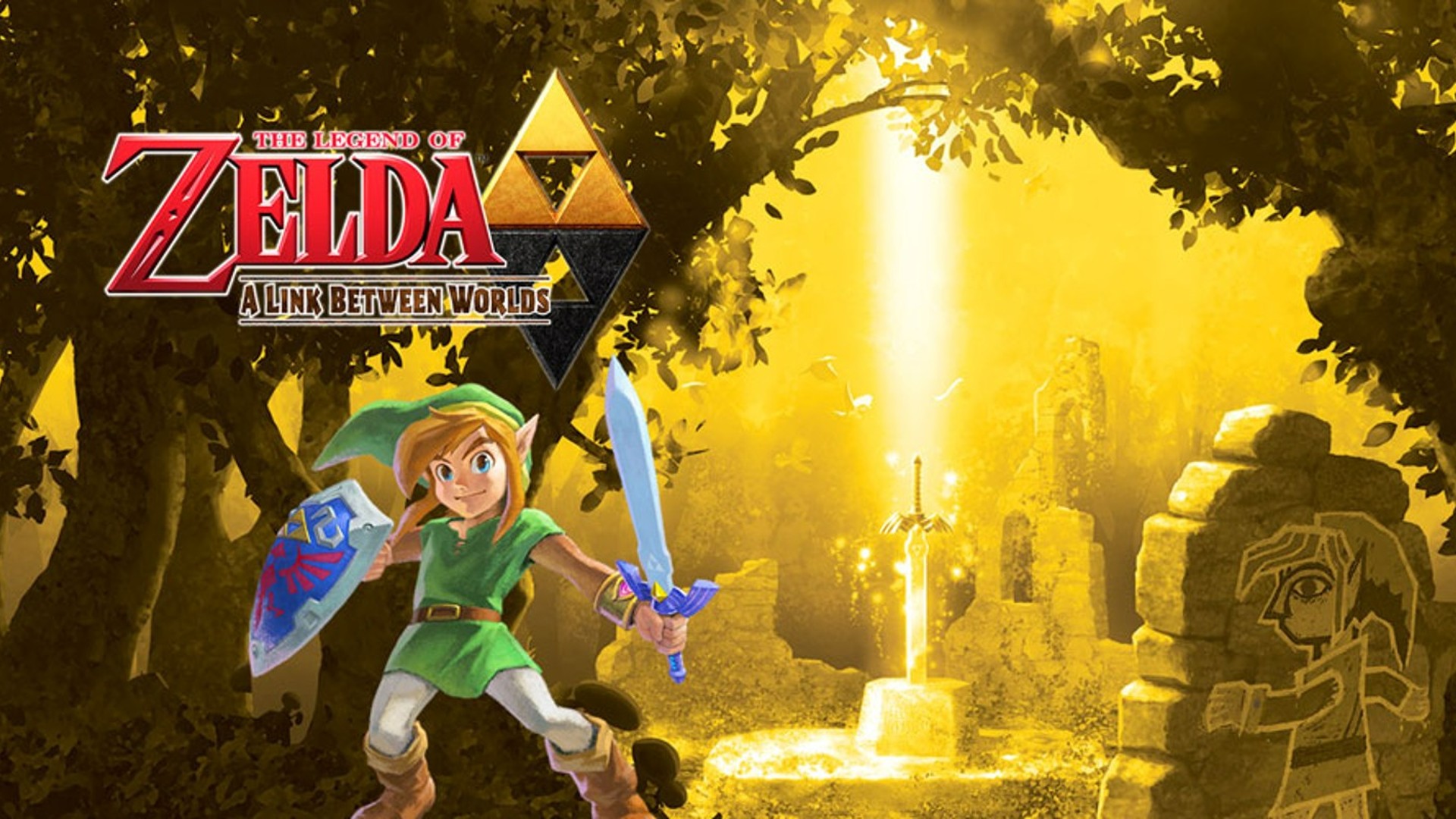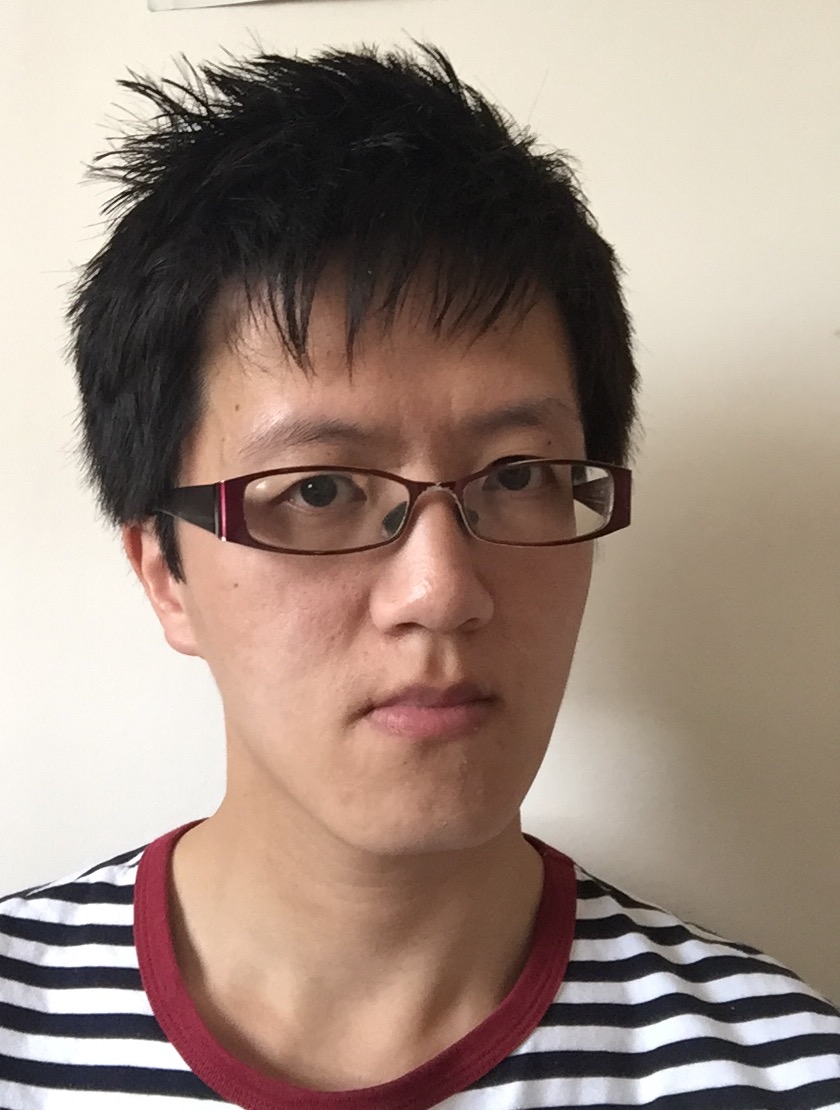
The Zelda series has had its share of direct sequels over the years. Majora's Mask takes place a couple of months after Ocarina Of Time while the DS titles Phantom Hourglass and Spirit Tracks follow on the path set by Wind Waker, including its cartoon art style, meanwhile, of course, the newest entry, Tears Of The Kingdom, follows directly on from the events of Breath Of The Wild.
However, while these are narrative continuations, they also take place in new settings. A Link Between Worlds, on the other hand, is a more curious case in that it is a direct sequel to the SNES classic A Link To The Past – in Japan, the 3DS game is called Triforce Of The Gods 2, Triforce Of The Gods being the Japanese title for A Link To The Past on Super Famicom – but also a spiritual successor.
Clear connections


The story is set untold years after that game's events, but the Hyrule we're in is undeniably the same one from the SNES game. The connection is clear when the game starts up, greeting you with the iconic fanfare of A Link To The Past's opening theme, while the camera pans over familiar landforms, only rendered in 3D instead of the original 2D sprites. Indeed, glance at the two games' world maps and it's surprising to see how alike they are, and there's a delight knowing that some things haven't changed – for instance, you'll still find a man camped beneath the castle bridge who'll also give you a bottle if you talk to him.
There's a difference in tone for how the story begins. Unlike its predecessor which begins on a stormy night, when our hero is thrust into a quest to save Hyrule after witnessing his uncle's death, A Link Between Worlds commences on a regular sunny day. Link, a humble blacksmith's apprentice, is tasked with making a delivery to Hyrule Castle before the plot thickens. But on the surface, there's a lot that's identical: again, Link must find three pendants, retrieve the Master Sword from the Lost Woods, and rescue seven sages to rescue Princess Zelda. Once again, the antagonist is an evil sorcerer who's out to resurrect Ganon, while there are also two different worlds, Hyrule and Lorule, which Link can traverse between. You'd be forgiven for thinking this was just a bit of a glorified remake when the 3DS had already enjoyed a handsome enhanced port of Ocarina Of Time.
Revisiting A Link To The Past, however, wasn't what the developers had in mind initially. Following the release of Spirit Tracks, members of that team had originally planned on a 3DS Zelda game that was built around the theme of 'communication', only for the concept to be rejected by Shigeru Miyamoto for being outdated. It was then that the idea came that Link would be able to merge into walls, switching the game between 3D to 2D perspectives, which was also well-suited to showcasing the handheld's stereoscopic 3D capabilities. This concept was approved and remained as one of the key gameplay features of A Link Between Worlds, which is also how Link can traverse between the game's two realms by squeezing his flat form in between fissures in the world. It was then later that Miyamoto suggested basing this title on A Link To The Past. Zelda series producer Eiji Aonuma proposed it use the same landforms and top-down viewpoint, and also retire the Wind Waker cel-shaded aesthetic that the DS titles had continued. Although this resulted in somewhat bland low-poly visuals that replicate but fail to capture the timeless sprites they are based on, the game's art style is just about rescued by the 2D version of Link being given a unique design as if he's a living mural painting moving through walls. This led to the creation of the game's villain Yuga, a sorcerer who traps people inside artwork, including the sages and Zelda, an idea apparently also inspired by Ocarina Of Time's Phantom Ganon, who would attack you by leaping out from canvases.
This familiar and nostalgic setting also served as an opportunity for the team to rethink and subvert Zelda's traditions, notably the way dungeons were structured so that you'd find a new item and then move onto another dungeon that requires the new item to access, and so establishing a linear sense of progression. But for the first time since the original The Legend Of Zelda, dungeons in A Link Between Worlds can be completed in any order you wish. The gating of progress with items is done away with, owing to how you now have all the items available from the start that you can rent from a mysterious rabbit-headed merchant called Ravio.
No world order

"But for the first time since the original The Legend Of Zelda, dungeons in A Link Between Worlds can be completed in any order you wish."
Unlike the NES title, which nonetheless had a hidden order based on their difficulty, these dungeons are balanced so that you can freely go to any as your first and not immediately come out with your tail between your legs. To that end, this game doesn't even have a canonical sequence unless players refer to the dungeons from A Link To The Past (many sharing the same names like Turtle Rock and Swamp Palace) to figure out a 'classic' route. Knowing which item you need to overcome a dungeon and then renting it may mean there's a loss of the surprise of finding a new tool in a treasure chest and figuring out how to use it (although series veterans will always know what to do with a Hookshot or a bomb), where solutions to puzzles may seem more prescriptive, however, the nonlinearity offered nonetheless meant A Link Between Worlds was a breath of fresh air when Skyward Sword on Wii had been criticised for being too linear. This freedom also meant less handholding, without an irritating guide popping up to tell you what to do every few minutes, although you'll find an eccentric witch who can help you fast-travel around Hyrule while also throwing in a few snarky remarks along the way. Nintendo would continue in this direction for great player freedom and nonlinear progression with the even more ambitious Breath Of The Wild.
Sign up to the GamesRadar+ Newsletter
Weekly digests, tales from the communities you love, and more
Of course, what the Wii U and Switch title was lacking was dungeons, and A Link Between Worlds has them in spades, cleverly concocted conundrums where you're playing with light and dark, fire and ice, or even cooperating with another character. In terms of sheer creativity, these are arguably the best dungeons in a top-down Zelda title, even if its 3D visuals mean it isn't a 'true' top-down perspective, with the camera slanted at an angle so that character faces and bodies could actually be visible. Where A Link To The Past introduced multiple floors to give a sense of 3D depth and scale to the dungeons, the 3DS game goes further, with Link able to traverse along the walls in mural form. There's also a much greater sense of depth thanks to the stereoscopic 3D effects that make this adventure another showstopping first-party title for the handheld alongside Super Mario 3D Land and Luigi's Mansion 2. That said, the release of the 2DS that same year meant the team had to revise the designs to ensure puzzles could be completed without the 3D features enabled.
At the same time, it also restored a tradition that would be a relief for many players: the return of button controls. While the touchscreen was used to control Link in Zelda games for the DS and arguably made the game more accessible, it wasn't embraced by the hardcore traditional fanbase. This control scheme was wisely ditched for the 3DS titles, especially since this new handheld had a circle pad that allowed for intuitive 360-degree movement, and now you can just see Link and all the action on the top screen without your finger or stylus getting in the way. A more reliable and satisfying control method was matched by a buttery-smooth 60fps performance. The touchscreen could be used as inventory management instead, adding immediacy to the gameplay that felt as fluid as A Link To The Past. Without the gimmick of touch controls or multiplayer, A Link Between Worlds was at once a back-to-basics top-down Zelda game not seen since 2004's The Minish Cap that also opened up how you could go about exploring the world. It was met with universal acclaim, even if some critics did find that the over-familiarity with A Link To The Past's map and landforms meant a loss of surprise, despite having the freedom of when and how you can explore certain places.
This is nonetheless still a bit gated since you can't rent select traversal items, such as the Zora Flippers for swimming in deep water. It's only really let down by an unmemorable art style that would also be used in Tri Force Heroes, although Smash Bros creator Masahiro Sakurai liked this game's iteration of Zelda, using it for Super Smash Bros Ultimate. Yet one might look at its simple polygons and consider it a prelude to the much more inspired diorama aesthetic for 2019's Link's Awakening remake, made possible with the Switch's HD-quality graphics. Indeed, a remake in that style for a modern platform is precisely what Nintendo should consider, as the best handheld Zelda game's legend deserves to endure for future generations.
Keep up to speed with all of our celebratory Zelda coverage with our The Legend of Zelda celebration hub
I'm a freelance games journalist who covers a bit of everything from reviews to features, and also writes gaming news for NME. I'm a regular contributor in print magazines, including Edge, Play, and Retro Gamer. Japanese games are one of my biggest passions and I'll always somehow find time to fit in a 60+ hour JRPG. While I cover games from all platforms, I'm very much a Switch lover, though also at heart a Sega shill. Favourite games include Bloodborne, Persona 5, Resident Evil 4, Ico, and Breath of the Wild.



